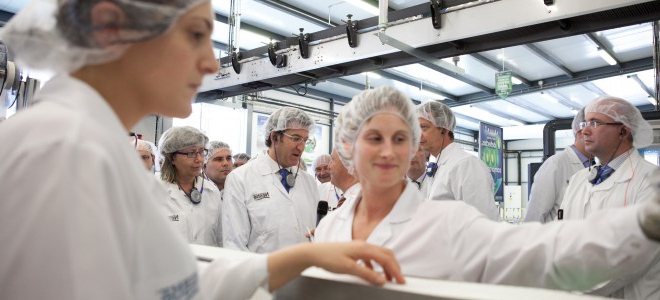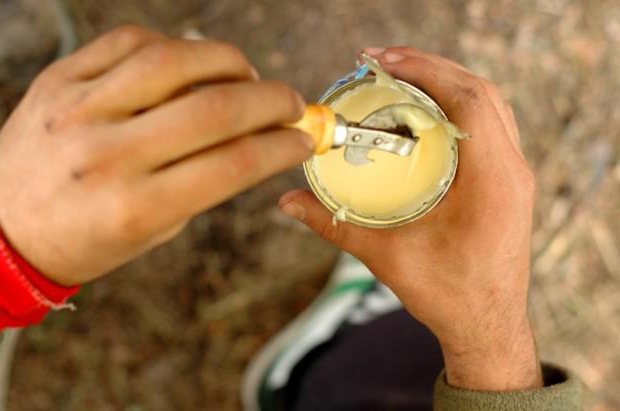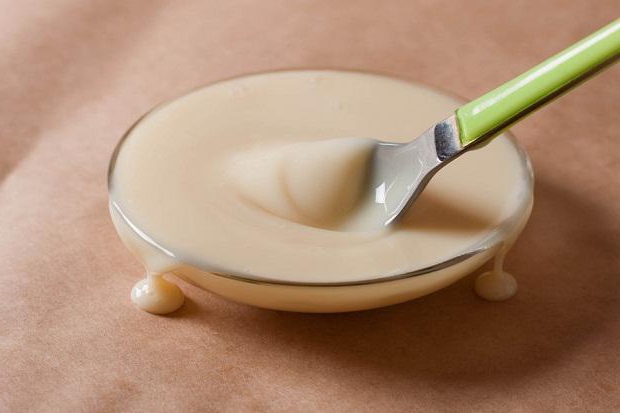Canned food production, containing milk, in Russia is developing rapidly. Experts explain the dynamics of increase in output by the growth of consumer demand for this product. At the same time, not only the population buys it. The purchase of canned milk is also carried out by enterprises engaged in the production of confectionery products.
Business prospects

The steady dynamics of growth in the use of milk by the food industry allows us to make a positive forecast for an increase in the number of firms working in this field over the next few years.
The list of promising products for production includes condensed milk. It is in high demand in the consumer market.
This product is a concentrated milk in which sugar is added. There are some varieties. As additional ingredients, they use coffee, cocoa, berry or fruit fillers.
Initially, the release of condensed milk was carried out only in cans. Currently, alternative packaging options have appeared. So, the product can be sold in plastic or glass bottles, soft bags, tubes, etc.
State standards
Condensed milk production is allowed not only in accordance with GOST. The product may comply with TU. This leads to the fact that in retail chains under the same name is a product with different consumer properties and composition.
Condensed milk production according to GOST is traditional. Such a product is highly trusted by customers. So, in Soviet times, according to GOST, only milk fats could be present in condensed milk. At present, many manufacturers use vegetable ingredients (palm oil, soy, etc.) in the recipe to reduce costs. The cost of the product becomes lower, but at the same time its nutritional and taste qualities are affected.
The new GOST R 53436-2009 was adopted in 2011. According to this standard, the production of condensed milk should be carried out using only raw milk, cream, sugar and water. In this case, only ascorbic acid can act as an antioxidant, and derivatives of potassium and sodium can act as a stabilizer.
According to the new GOST, condensed milk is classified depending on the proportion of fat in it. So, in the composition of a fat-free product its 1%. In ordinary condensed milk - up to 8.5%. Condensed cream has a large mass fraction of fat (up to 19%).
Certain requirements for the product are also imposed by the protein content in it. This component should be more than 34%.
The new GOST describes the requirements for the consistency and appearance of the product, as well as for containers used for its packaging.
In the case when the condensed milk has a heterogeneous mass and the presence of crystals of milk sugar is tasted, it is considered poor quality. The product should have a sweet milky taste and smell.
The color of condensed milk can have various shades. It can be not only pure white, but also cream. A bluish tint is inherent in skim milk.
GOST requirements apply to containers. It should be made of non-toxic material.
Equipment
Condensed milk production is becoming increasingly widespread. In this regard, the market offers a considerable amount of various equipment.

When organizing your business, you can pick up any type, capacity and size. Modern equipment for the production of condensed milk is created using new technologies. It can significantly reduce the energy required for the release of the product.
To this can be added the high popularity enjoyed by condensed milk among customers, the widespread use of the product in the food industry and a significant shelf life. All these factors make it possible to achieve excellent production profitability.
On average, it is up to ten to fifteen percent. However, it is worth remembering that these figures are true only for the production in which new technologies are applied.
Manufacturing process
Condensed milk is obtained by evaporating part of the water from a fresh product. Cane or beet sugar is added to the resulting concentrate. This ingredient greatly improves the taste of the product.

The technology for the production of condensed milk with sugar is based on the principles of osmoanabiosis. This process can be carried out by increasing the dry elements of milk, as well as by adding sucrose to the product. These actions can increase the osmotic pressure. Heat treatment and tightness of the packaging contribute to an increase in shelf life.
The main stages of the process
All stages of production are a set of sequential operations. This includes the reception, as well as storage and preparation of the necessary raw materials. After that, all components are dissolved and thoroughly mixed. The necessary steps for obtaining the product are homogenization, pasteurization of the mixture, obtaining sugar syrup, directly thickening, followed by cooling, packaging and labeling.
At the initial stage of production, the quality of the milk received is evaluated. Only after this, the initial product is cooled, reserved and thoroughly cleaned. At this stage, it may be necessary to increase the fat content of the feed. Then cream is added to it. Sometimes you need to lower fat content. To do this, add skim to the original milk. At the same stage, stabilizers and salt can be added to the mixture.
An important step in the process is pasteurization. Heating the mixture to ninety-five degrees eliminates pathogens and stabilizes the physical and chemical properties of milk. After passing the pasteurization step, the product is able to maintain a liquid consistency for a long period.
In the next step, the product is cooled. Its temperature should be seventy to seventy-five degrees. Then sugar is added to the mixture. Its familiar solid form may be used. In some cases, a syrup is prepared in which the percentage of sugar is seventy.
The next step is to thicken the milk mixture. For this, a vacuum evaporator is used. Milk when it enters the tank immediately boils. Moisture evaporates. After passing through a vacuum evaporation plant, the resulting product is cooled in crystallizers.
In the mixture cooled down to twenty degrees, seed is added from ground to the state of lactose powder. It prevents the formation of crystals in condensed milk.
At the last stage, the product is packaged. For this, automated equipment is used. Lamister or tin cans, as well as polystyrene and polypropylene cups serve as containers for condensed milk. In the first packaging option, the product can be stored for a year. In the second case, condensed milk should be sold within three months.
Other production methods
Condensed milk can be obtained in a different way.Recently, a different production method has been most commonly used. It provides for the use of milk powder. This technology is slightly cheaper than the one described above. First of all, due to the lower cost of the ingredients used. Also with this method there is no need for evaporation of moisture.

To obtain the product, take all the necessary ingredients. The mixture is mixed until a homogeneous structure is passed through the filters and enters the mold. In this device, lactose seed is added to it. Then the product is quickly cooled and packaged in bags or cups. Condensed milk powder is rarely packaged in cans. This allows you to minimize its cost.
The condensed milk production line may allow the production of a combined product. In this case, the main component in the summer is taken whole, in the winter - dry.
Start a business
In the event that you decide to start the production of condensed milk in accordance with GOST, then, in addition to the production line, you will need additional tanks and a refrigerator for storing raw materials. At the same time, energy costs increase significantly.
Do not forget about the requirements of SES, which apply to all enterprises of the dairy industry. You can familiarize yourself with them by reading the "Guidelines for the Organization of the Sanitary and Epidemiological Control Service." These hygiene requirements apply not only to the initial organization of enterprises, but also to all stages of the process.
For beginning businessmen, the second method is suitable. In order to store dry mixes, special equipment is not required. In this regard, energy consumption is also reduced. As a rule, starting their own business, they produce condensed milk, which is supplied to private bakeries, pastry shops and factories. Such a product does not require packaging.
New ideas
At the first stages of organizing your own business, you can purchase a production line that will produce not only condensed milk, but also boiled milk. In one shift, this equipment will be able to produce up to five tons of a sweet product. The same line can also be used for the production of fruit jams, boiling juices, etc.
Business profitability

Companies that manufacture and sell equipment for the production of condensed milk argue that its payback period is no more than a year. However, these indicators should actually be multiplied by two, or even three. It will take some time to search for wholesale buyers. In addition, in the absence of experience in this area will have to master the wisdom of the production process. This will also take some time.
For example, to organize the production of condensed milk from dried raw materials, you will need to make the following capital investments. First of all, the purchase of equipment will be required (three USM-4 units). Its cost will be approximately sixty thousand rubles.
You will need a BCM-100 reducing agent for milk powder. It can be purchased for one hundred eighty-two thousand. If thirty shifts of eight hours are worked out per month, then the result will be 1980 kg. This calculation was made taking into account the daily output of one installation, equal to 22 kg With the cost of the product equal to one hundred rubles, the monthly revenue will be 198,000 rubles.
In order to calculate net income, the following should be taken from this amount:
- the cost of condensed milk is approximately 76,000 rubles;
- rental of premises, wages, transportation and other expenses - 70,000 rubles.
As a result, the amount of net profit during the month will be 51,736 rubles, which will allow investments to pay off in five months.








